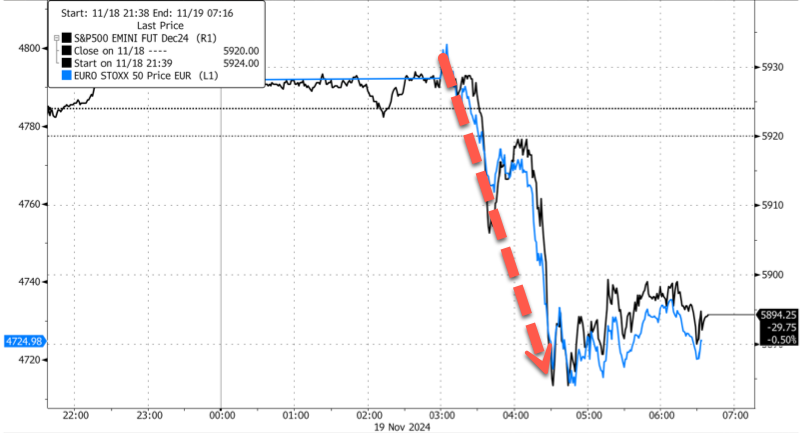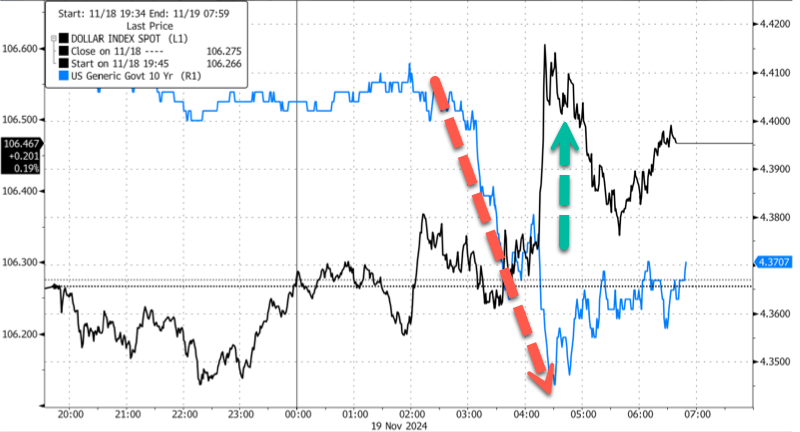(Zero Hedge)—About a day after President Biden authorized Ukraine to use the long-range US-made MGM-140 Army Tactical Missile System to strike deeper into Russian territory, a new report suggests that the Ukrainian Armed Forces have hit a military installation in the western Bryansk region. This comes after Kremlin spokesperson Dmitry Peskov said Russia’s nuclear weapons doctrine was changed and signed by President Vladimir Putin, indicating “the use of Western non-nuclear rockets by the Armed Forces of Ukraine against Russia can prompt a nuclear response.”
“For the first time, Ukraine’s Defense Forces struck Russian territory with ATACMS ballistic missiles,” RBC Ukraine news agency reported Tuesday.
RBC Ukraine said the military facility near the city of Karachev in the Bryansk region was successfully hit with ATACMS. This location was about 115 kilometers (71 miles) from the border with Ukraine.
ATACMS flew more than 140 km and hit a target in the Bryansk region, russia.
This means that the strike permit applies not only to Kurshchyna, as the Western media wrote about it. This attack also showed that the air defense of the russian Federation will have big problems with… pic.twitter.com/0Y1PU8g1Nt
— Jürgen Nauditt 🇩🇪🇺🇦 (@jurgen_nauditt) November 19, 2024
“Indeed, for the first time, we used ATACMS to strike Russian territory. The strike was carried out against a facility in the Bryansk region, and it was successfully hit,” one source told the local media outlet.
Separately, media outlet Kyiv Post stated the 67th arsenal of the Main Directorate of the Missile and Artillery Directorate of Russia was hit. The facility reportedly had large stockpiles of anti-aircraft missiles, munitions for multiple launch rocket systems, artillery ammunition, and guided bombs, much of which was supplied by North Korea.
Kyiv Post noted:
Which crypto-backed IRA is best?
– BlockTrust IRA is ideal for managed accounts.
– iTrustCapital is for buy and hold.
Russian media sources, including residents on social networks, reported explosions coming from within the Karachev district, and suggesting that a “military base” was being attacked. The Russian Astra Telegram channel shared videos of the incident, while local reports said that there had been strikes on this arsenal in late 2023 and again in June and October this year.
Bloomberg revealed more details about the attack:
Russian Defense Ministry confirmed Ukrainian armed forces launched a strike with US-made ATACMS ballistic missiles at a military object in Bryansk region on the border with Ukraine, Interfax reports.
- 5 missiles were shot down, 1 damaged; no casualties reported
- Missile debris caused fire in a military installation
Here’s alleged footage of the strike:
❗️For the first time in history! The Armed Forces of Ukraine today struck a facility on the territory of the Russian Federation with ballistic ATACMS from the United States, – media reports citing sources. pic.twitter.com/kO4Qs9ASPr
— 🪖MilitaryNewsUA🇺🇦 (@front_ukrainian) November 19, 2024
Earlier, Kremlin spokesperson Dmitry Peskov told reporters that President Vladimir Putin signed new changes to Russia’s nuclear weapons doctrine.
Peskov said the new modifications signify “the use of Western non-nuclear rockets by the Armed Forces of Ukraine against Russia can prompt a nuclear response.”
Peskov’s comments were made shortly after President Biden approved Ukraine’s use of ATACMS against military targets deep inside Russia.
In markets, US equity futures and European equities fell on the news.
Global bonds climbed on World War III threats. The yield on the US 10-year slid about seven basis points to 4.34% & dollar surged.
“The market reaction is logical, one could feel already yesterday that the tension, was rising,” said Andrea Tueni, head of sales trading at Saxo Banque France, who was quoted by Bloomberg, adding, “For the moment the market reaction is contained, some are still in a wait-and see- mode.”
Even though the Russian leader warned the US and its European allies against using ATACMS against Russian military facilities within its borders, which could spark a direct conflict, the Biden-Harris team of warmongers and the Europeans continued pushing the world closer to World War III.
One of Harris’ biggest supporters…
Meanwhile, Donald Trump Jr. views this ultra-dangerous ploy by the lame-duck Biden administration as a move by radical far-left Democrats in the White House to push the world dangerously closer to WW3 before his father takes office.
“The Military Industrial Complex seems to want to make sure they get World War 3 going before my father has a chance to create peace and save lives,” he said on X Sunday.
God help us all.





